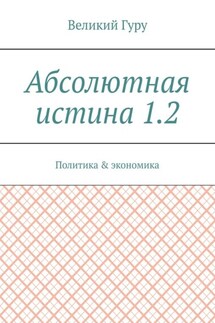Размышления женщины о геополитике - страница 22
The BEPS package developed by the OECD upon the request of G20 leaders covers three unifying tasks:
– to align rules on taxation with the location of economic activity and value creation;
– to improve coherence between domestic tax systems and international rules;
– to promote transparency.
The BEPS package was introduced in Kyoto, Japan, in June 2016. The BEPS Project delivers solutions for governments to close the gaps in existing international rules that allow corporate profits to «disappear» or be artificially shifted to low or no tax environments, where companies have little or no economic activity61.
In line with the OECD BEPS package, the European Commission adopted the Action Plan (2015) for fair and efficient corporate taxation in the EU, which also deals with issues related to harmful tax practices. On 28 January 2016, the European Commission presented the Anti-Tax Avoidance Package and the Council adopted the Anti-Tax Avoidance Directive on 12 July 2016. The Directive proposes six legally binding anti-abuse measures to counteract some of the most common types of aggressive tax planning, which all Member States should apply against common forms of aggressive tax planning.
Key features of the Anti-Tax Avoidance Package include:
– legally-binding measures to block the most common methods used by companies to avoid paying tax;
– a recommendation to Member States on how to prevent tax treaty abuse;
– a proposal for Member States to share tax-related information on multinationals operating in the EU;
– actions to promote tax good governance internationally;
– a new EU process for listing third countries that refuse to play fair62.
Political agreement on the Anti-Tax Avoidance Directive (ATAD) was reached by the EU Member States at the meeting of Economic and Financial Affairs (ECOFIN) Council on 17 June 2016. The agreement requires all Member States to enact laws that largely implement G20/OECD base erosion and profit shifting (BEPS) outcomes on interest limitation rules, hybrid mismatches and controlled foreign companies (CFCs) as well as additional measures on exit taxation and a general anti-abuse rule (GAAR). Member States were generally required to adopt these ATAD measures in their domestic law by 31 December 2018.
Promoting transparency
Transparency is crucial to identifying aggressive tax planning practices by large companies and to ensuring fair tax competition. Measures to combat BEPS would be inefficient without resolving the problem of high offshore secrecy. «The veil of secrecy can too easily be used to hide the beneficial owners of legal arrangements from tax administrations and other law enforcement agencies»63. The latest standard for identifying beneficial owners was developed by the Financial Action Task Force in 2012. The FATF published the new Guidance on Transparency and Beneficial Ownership in 2014.
The FATF gives the following definition: «Beneficial owner refers to the natural person (s) who ultimately owns or controls a customer and/or the natural person on whose behalf a transaction is being conducted. It also includes those persons who exercise ultimate effective control over a legal person or arrangement». Further on, the Guidance gives a more detailed interpretation: «an essential element of the FATF definition of beneficial owner is that it extends beyond legal ownership and control to consider the notion of ultimate (actual) ownership and control. In other words, the FATF definition focuses on the natural (not legal) persons who actually own and take advantage of capital or assets of the legal person; as well as on those who really exert effective control over it (whether or not they occupy formal positions within that legal person), rather than just the (natural or legal) persons who are legally (on paper) entitled to do so»







